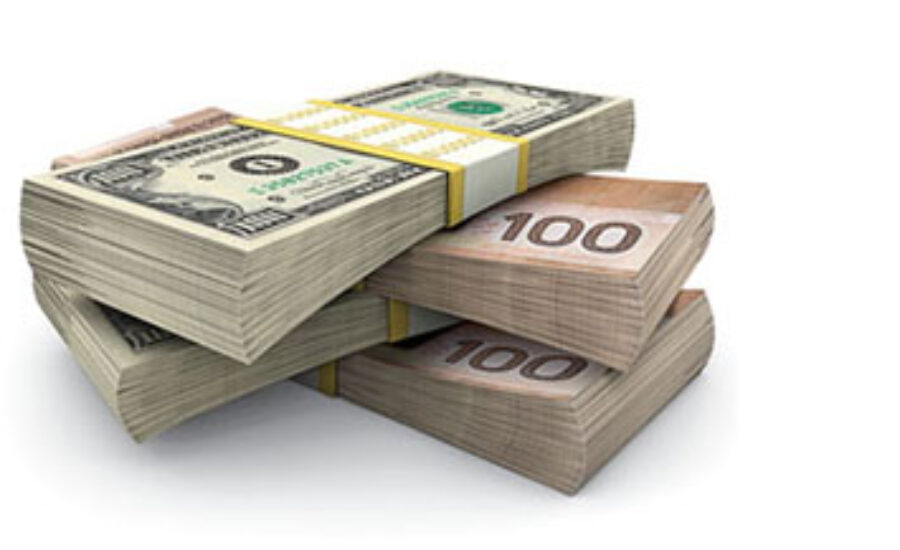Should I buy my U.S. stocks in Canadian dollars?
When you convert your loonies into U.S. dollars isn't the issue, it's how you convert from one currency to another that matters.
Advertisement
When you convert your loonies into U.S. dollars isn't the issue, it's how you convert from one currency to another that matters.

Q. I’m a beginner investor with a small, diversified portfolio that includes a number of U.S. stocks. For simplicity’s sake, I bought these stocks in Canadian dollars and held them in my Canadian-dollar trading account. Recently it seems this is hurting my performance due to the currency fluctuations. Should I instead be buying these stocks in U.S. dollars?
–Norman
A. Adding U.S. and foreign stocks (or ETFs) is an important way for Canadians to diversify their portfolio. But buying individual U.S. securities can be confusing and potentially expensive. You’ve raised a number of good questions, Norman, so let’s clarify the key things you need to know.
First, whether you hold the stocks in a Canadian- or U.S.-dollar account has no effect on your returns. The difference you’re noticing is just an illusion. Here’s a detailed example to help you understand this important idea. (It assumes no fees or taxes, and that you are able to convert your currency at no cost. We’ll soon see why this last assumption isn’t true in the real world.)
But here’s the thing, Norman: the same would have been true if you had bought the stock with U.S. dollars and held it on the U.S. side of your account:
So assuming you measure your performance in Canadian dollars—and you should—then the currency you used to buy the shares doesn’t matter. Your portfolio will rise or fall in value by the same amount either way.
In the example above we assumed that the cost of converting one currency to another was zero. Unfortunately, in the real world this isn’t the case. In fact, buying and selling U.S. dollars through your brokerage is often a raw deal.
Norman, you mentioned you bought U.S. stocks with Canadian dollars for simplicity, which is reasonable. But you should understand that when you do this, your brokerage will convert your CAD to USD at an unfavourable rate. It’s not unusual for the “spread” (that is, the difference between the rate you would pay when buying a currency compared to the rate you receive when selling it) to be 1.5% or more.
To return to our example above, if the exchange rate for one U.S. dollar is $1.30 CAD, you might actually pay $1.32 or more. Moreover, you get gouged again when you eventually sell the U.S. stock and receive the proceeds in CAD. To continue the above example, instead of receiving $1.15 CAD for each U.S. dollar, your brokerage might convert your USD at just $1.13 CAD.
Applying these rates to the example above, your 100 shares of U.S. stock would have cost $3,300 CAD and your proceeds would have been $3,164 CAD. Instead of losing $30, you would have lost $136.
Now, if you’re a long-term investor who doesn’t trade frequently and plans to hold a few U.S. stocks or ETFs for many years, it might be worth accepting this currency conversion cost. And if you’re a rookie investor, this is certainly the simpler route.
However, if you want to keep your currency costs as low as possible, you can consider a technique called Norbert’s gambit. This nifty trick involves finding a stock or ETF that trades on both a Canadian and U.S. exchange: you can then buy it on the CAD side of your account and then sell it on the USD side (or vice versa), thereby sidestepping your brokerage’s forced currency conversion.
Norbert’s gambit can be tricky, and the exact instructions are different for every brokerage. The good news is my colleague Justin Bender has created instructional videos for performing Norbert’s gambit in an RRSP at the major online brokerages. You can find them on his YouTube Channel: DIY Investing with Justin Bender.
Share this article Share on Facebook Share on Twitter Share on Linkedin Share on Reddit Share on Email
Great article! Thanks for the great explanation and insight to this somewhat complex issue. A quick one: I want to buy the S&P 500 index (ETF). What is better for me. A. Convert CDN$ to USD$ and buy the US index ETF on the US market. B. Buy the US index ETF, but keeping it on the Canadian side of my account ( so although I purchased US shares (ETF), it shows a fixed purchase price in CDN$ on my account. C. Buy a Canadian ETF mirroring the S&P 500 in CDN $ ( non hedged) and finally D. Buy a Canadian S&P 500 ETF (currency hedged).
What is the best option to minimize currency exchange cost? Which of the four options above is best for me as a long term investor.
Thank you.
One additional point, trade as you need in a US account – that is, buy and sell, leaving your money in US dollars, but convert back to Canadian when the rates are in your favour.
Wow, thank you.